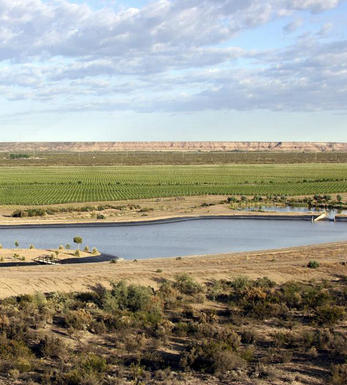
About this WINE

Bodega del Desierto
Bodega del Desierto (winery of the desert) is located in the Patagonian desert in a town called ‘25 de Mayo’ (hence the reference to 25 in their wine names). It is a long, long way from any other wineries in the region of La Pampa. Here, the extreme climate and strong winds result in distinctive and elegant wines.
Patagonia has a very old, yet little known, viticultural tradition. It was one of the first locations selected in Argentina by the pioneers and immigrants on the XIX century, due to excellent conditions to produce high quality grapes for wine production. The later boom of local mass wine consumption (that reached its peak with 90 litres per capita in 1970) encouraged producers to move into northern locations with higher yield production and better transportation facilities (railroad to Buenos Aires, the main area of consumption). The viticultural potential of Patagonia was therefore kept almost unexploited for many years, till the Argentine reconversion to high quality wines in the eighties and nineties.
It was in 2000 that Armando and Maria Loson, brother and sister from an Argentine family, had the chance to lead a family project on the High Valley of the Colorado River area, north of Patagonia - south of La Pampa province. After a thorough study of the soil and weather that determined the suitability to produce high quality grapes, they decided to plant the vineyard. At first, the project was to sell the grapes to other wineries but after the impressive results of the first harvest they took the chance to produce under their own brands.
The soil is sandy and deep with variable content of stones. Its low organic matter content leads to restricted vine growth and to the natural development of premium grapes. The main characteristic is the mineral component that is noticeable in all Bodega del Desierto’s wines. The vine structure was designed by Mario Toso on trellis, with a double-cordon training system and a density of 3,500 plants per hectare using all drip irrigation with pure and clean melt water from the Andean Mountains, taken from the Colorado River. Irrigation is essential as the average annual rainfall here is only 200mm. The winemaker is Sebastian Cavagnaro and the consultant agronomist is Enzo Mugnani. Ex-Robert Mondavi/Opus One superstar consultant winemaker, Paul Hobbs (twice named Wine Personality of the Year by Robert Parker), has been working with the vineyard and the wines since 2003.
The geographic and climatic characteristics, with less than seven inches of rainfall a year, gave birth to the name Bodega del Desierto. Two of the most representative pictures of the soil inspired the design pattern for the labels. The virgin land where the vineyard was planted is still surrounded by 160 km of desert, ensuring a natural sanitation buffer and also maintaining the integrity of the ecosystem. In addition, the vineyard is located at the western end of the route 20 that connects Buenos Aires to Patagonia, well known as ‘ruta del desierto’ because of its isolated and long straight road with hardly anything from beginning to end.

Syrah/Shiraz
A noble black grape variety grown particularly in the Northern Rhône where it produces the great red wines of Hermitage, Cote Rôtie and Cornas, and in Australia where it produces wines of startling depth and intensity. Reasonably low yields are a crucial factor for quality as is picking at optimum ripeness. Its heartland, Hermitage and Côte Rôtie, consists of 270 hectares of steeply terraced vineyards producing wines that brim with pepper, spices, tar and black treacle when young. After 5-10 years they become smooth and velvety with pronounced fruit characteristics of damsons, raspberries, blackcurrants and loganberries.
It is now grown extensively in the Southern Rhône where it is blended with Grenache and Mourvèdre to produce the great red wines of Châteauneuf du Pape and Gigondas amongst others. Its spiritual home in Australia is the Barossa Valley, where there are plantings dating as far back as 1860. Australian Shiraz tends to be sweeter than its Northern Rhône counterpart and the best examples are redolent of new leather, dark chocolate, liquorice, and prunes and display a blackcurrant lusciousness.
South African producers such as Eben Sadie are now producing world- class Shiraz wines that represent astonishing value for money.



Buying options
Add to wishlist
Description
As the use of the term Syrah (as opposed to Shiraz) suggests, this Patagonian wine is refined and elegant. Its linear shape is almost French but it benefits from the additional power of overt, South American fruit. Black cherries dominate whilst the palate is plush with good freshness and mineral zip. The wet stone finish adds life and vitality to this excellent value wine.
Catriona Felstead MW, New World Buyer
wine at a glance
Delivery and quality guarantee